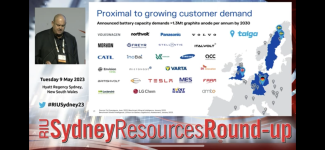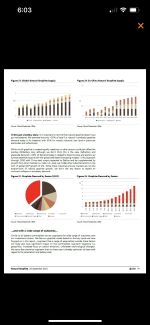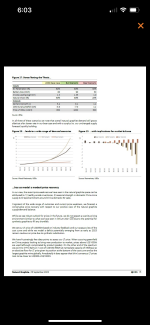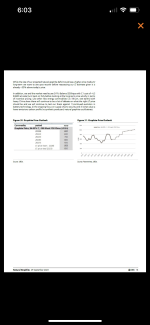You’re right TC. Also good to see Lars, Founder & CEO of Italvolt will be there. They could well be part of the 90% of customer relationships/testing in the pipeline, as stated by MT @ RIU in May 2023.
You are using an out of date browser. It may not display this or other websites correctly.
You should upgrade or use an alternative browser.
You should upgrade or use an alternative browser.
TLG Discussion 2022
- Thread starter zeeb0t
- Start date
Whilst I’m certainly not thrilled about extra delays waiting for the verdict from the Supreme Court, one silver lining is those other cell manufacturers/OEMs that are undertaking the qualification process with Talnode-C must be getting closer to the pointy end and help create some competitive tension with ACC & Verkor for the limited supply Talga does have with Stage 1 production.
The French Auto‘s seem the most bullish to reduce reliance on Chinese sourced battery raw materials calling for the anti-dumping investigation into Chinese EVs into Europe. Perhaps, it shouldn‘t be surprising that our two public offtake partners have French connections with Renault & Stellantis. The German OEMs bottom line is more highly exposed to Chinese sales - so unfortunately don‘t want to rock the boat, which is understandable, but i believe short sighted given the geopolitical risks.
The French Auto‘s seem the most bullish to reduce reliance on Chinese sourced battery raw materials calling for the anti-dumping investigation into Chinese EVs into Europe. Perhaps, it shouldn‘t be surprising that our two public offtake partners have French connections with Renault & Stellantis. The German OEMs bottom line is more highly exposed to Chinese sales - so unfortunately don‘t want to rock the boat, which is understandable, but i believe short sighted given the geopolitical risks.
Semmel
Top 20
I am thinking lately that the decision of the environmental court to issue the permit but make it non consumable until permits are resolved has put us into this limbo of everlasting delays. We would not be here without that decision.
I am thinking it's not entirely lawful either. To give an analogy, it's like you are getting your driver's license, acing all the tests and getting the license. But then you are told you can't drive a car because your neighbors are worried that you run them over. So you can't drive a car until such time that another court has decided that the fears of your neighbor are unfounded and you are in fact capable of driving a car. Makes no sense to me. Either you got your license or you didn't. And your neighbor can file a law suit that you are not fit to drive a car because you ran them over with your bike once.. or something.
Back to reality.. How is the environmental court saying simultaneously that Talga fulfills all requirements but at the same time saying they are not qualified to make that decision? Because that's exactly what they are saying with kicking the can down the road. Another court might decide that the environmental court made a mistake, fine, such is life. But the environmental court should not have the power to say they might make a mistake with their decision. It's not their job. If they fear they might go something wrong in their process, they should fix their process, not handing in their decision while saying.. "might be wrong, who knows?"
I am thinking it's not entirely lawful either. To give an analogy, it's like you are getting your driver's license, acing all the tests and getting the license. But then you are told you can't drive a car because your neighbors are worried that you run them over. So you can't drive a car until such time that another court has decided that the fears of your neighbor are unfounded and you are in fact capable of driving a car. Makes no sense to me. Either you got your license or you didn't. And your neighbor can file a law suit that you are not fit to drive a car because you ran them over with your bike once.. or something.
Back to reality.. How is the environmental court saying simultaneously that Talga fulfills all requirements but at the same time saying they are not qualified to make that decision? Because that's exactly what they are saying with kicking the can down the road. Another court might decide that the environmental court made a mistake, fine, such is life. But the environmental court should not have the power to say they might make a mistake with their decision. It's not their job. If they fear they might go something wrong in their process, they should fix their process, not handing in their decision while saying.. "might be wrong, who knows?"
Court decisions can always be stayed by a higher court until the higher court has time to rule on the issue. The main difference in Sweden seems to be that all decisions are stayed by default.I am thinking lately that the decision of the environmental court to issue the permit but make it non consumable until permits are resolved has put us into this limbo of everlasting delays. We would not be here without that decision.
I am thinking it's not entirely lawful either. To give an analogy, it's like you are getting your driver's license, acing all the tests and getting the license. But then you are told you can't drive a car because your neighbors are worried that you run them over. So you can't drive a car until such time that another court has decided that the fears of your neighbor are unfounded and you are in fact capable of driving a car. Makes no sense to me. Either you got your license or you didn't. And your neighbor can file a law suit that you are not fit to drive a car because you ran them over with your bike once.. or something.
Back to reality.. How is the environmental court saying simultaneously that Talga fulfills all requirements but at the same time saying they are not qualified to make that decision? Because that's exactly what they are saying with kicking the can down the road. Another court might decide that the environmental court made a mistake, fine, such is life. But the environmental court should not have the power to say they might make a mistake with their decision. It's not their job. If they fear they might go something wrong in their process, they should fix their process, not handing in their decision while saying.. "might be wrong, who knows?"
Semmel
Top 20
Court decisions can always be stayed by a higher court until the higher court has time to rule on the issue. The main difference in Sweden seems to be that all decisions are stayed by default.
Yeah I know, but that's not what happened. The environmental court did this to it self. It said " my decision is not valid until the appeals are through". Which is not normal I believe, not even in Sweden.
What makes you say that it's not normal in Sweden? Talga appealed the stay and was denied by the appeals court so it's not just an action that was taken by the environmental court.Yeah I know, but that's not what happened. The environmental court did this to it self. It said " my decision is not valid until the appeals are through". Which is not normal I believe, not even in Sweden.
Semmel
Top 20
What makes you say that it's not normal in Sweden? Talga appealed the stay and was denied by the appeals court so it's not just an action that was taken by the environmental court.
I think its not normal because the court made a specific statement about it. Here, I dont know why the appeal to this specific decision was denied. But to me, its not logical that the authority to grant permits sais about it self that it doesnt have the authority to grant the permit. It cant be right. If it has the authority and a higher court said: "Ah, you made a mistake! We have to roll back!" thats ok, thats how it has to be. But the court saying about it self: "We grant you the permit, but we think we dont have the authority to do so, so the courts above has to decide whether we have done no mistake." is a level of self reflectivity that makes no sense to me. The court shouldnt be able to deny its own authority.
I agree that it's a dumb system but I think you're jumping to conclusions if you think it's non-standard in Sweden. The mere fact that there was a statement in the decision saying that it wouldn't go into effect until all appeals have been adjudicated doesn't mean that the statement is non-standard.I think its not normal because the court made a specific statement about it. Here, I dont know why the appeal to this specific decision was denied. But to me, its not logical that the authority to grant permits sais about it self that it doesnt have the authority to grant the permit. It cant be right. If it has the authority and a higher court said: "Ah, you made a mistake! We have to roll back!" thats ok, thats how it has to be. But the court saying about it self: "We grant you the permit, but we think we dont have the authority to do so, so the courts above has to decide whether we have done no mistake." is a level of self reflectivity that makes no sense to me. The court shouldnt be able to deny its own authority.
Semmel
Top 20
I agree that it's a dumb system but I think you're jumping to conclusions if you think it's non-standard in Sweden. The mere fact that there was a statement in the decision saying that it wouldn't go into effect until all appeals have been adjudicated doesn't mean that the statement is non-standard.
I dont think its an assumption as otherwise Talga wouldn't have the option to appeal it. It must be a decision by the court, otherwise an appeal wouldn't make sense. So you can call it an assumption but its not random and its certainly not jumping to conclusions. I am pretty sure Talgas lawyers would have known. Do you have actual knowledge on the subject and play cat and mouse or is it also an assumption that it might be standard practice?
I for one was blind sided by the court not providing us with a concession to progress whilst any appeals were considered, particularly given the apparent success of the trial mine and some other green projects getting the go-ahead from the courts stamp.I dont think its an assumption as otherwise Talga wouldn't have the option to appeal it. It must be a decision by the court, otherwise an appeal wouldn't make sense. So you can call it an assumption but its not random and its certainly not jumping to conclusions. I am pretty sure Talgas lawyers would have known. Do you have actual knowledge on the subject and play cat and mouse or is it also an assumption that it might be standard practice?
These appalents appear to have no substance to their lodgements but with summer holidays and extensions to "deadlines" this has blown out. Imagine a critical green project having to fold because of a process with nothing material behind it. That won't be TLG but maybe others.
As an aside, I was surprised this lawyer had clarity on a 4 week extension so quickly and I assume TLG has been made aware, but shouldn't that be material enough to warrant an update to shareholders? Seems strange.
What I'm saying is simply that I don't understand how you're concluding that it's not standard practice. I'm not saying that I know that it is standard.I dont think its an assumption as otherwise Talga wouldn't have the option to appeal it. It must be a decision by the court, otherwise an appeal wouldn't make sense. So you can call it an assumption but its not random and its certainly not jumping to conclusions. I am pretty sure Talgas lawyers would have known. Do you have actual knowledge on the subject and play cat and mouse or is it also an assumption that it might be standard practice?
Here's the evidence that it could be standard:
- MT says this appeal period is how it's always worked in Sweden
- Environmental court didn't attempt to justify its statement that the permit would not be usable while appeals are pending. If the statement has been non-standard it seems likely that the environmental court would have mentioned why they were adding a non-standard requirement.
- Appeals court rejected Talga's appeal on the stay without proving any specific or technical reason for doing so, implying that this is standard and doesn't require further justification.
- In this article about a different mine, it said that now that the supreme court did not grant leave to appeal, the company could start operations, which implies that they weren't able to operate while the appeals were pending. https://www.svemin.se/en/news/news/green-light-for-swedens-first-new-mine-in-10-years/
ACinEur
Regular
UBS report…sorry don’t have the link
Attachments
-
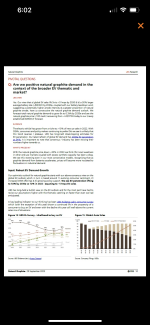 IMG_1119.png2.7 MB · Views: 149
IMG_1119.png2.7 MB · Views: 149 -
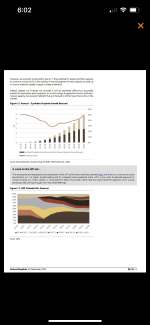 IMG_1118.png1.8 MB · Views: 145
IMG_1118.png1.8 MB · Views: 145 -
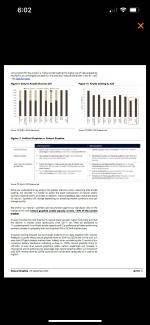 IMG_1117.png2.7 MB · Views: 152
IMG_1117.png2.7 MB · Views: 152 -
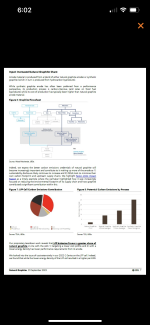 IMG_1116.png2.1 MB · Views: 142
IMG_1116.png2.1 MB · Views: 142 -
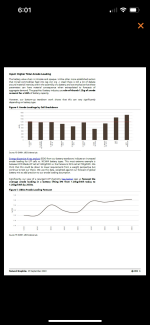 IMG_1115.png1.8 MB · Views: 146
IMG_1115.png1.8 MB · Views: 146 -
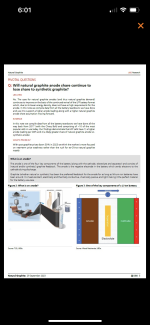 IMG_1114.png2.5 MB · Views: 137
IMG_1114.png2.5 MB · Views: 137 -
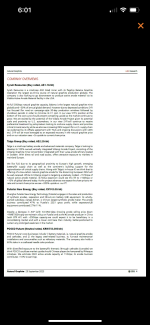 IMG_1113.png3.1 MB · Views: 136
IMG_1113.png3.1 MB · Views: 136 -
 IMG_1112.png1,004.1 KB · Views: 137
IMG_1112.png1,004.1 KB · Views: 137 -
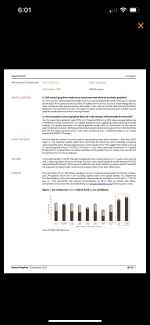 IMG_1111.png2.4 MB · Views: 143
IMG_1111.png2.4 MB · Views: 143 -
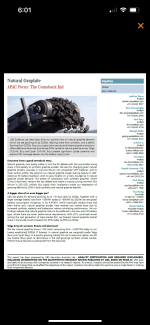 IMG_1110.png4 MB · Views: 155
IMG_1110.png4 MB · Views: 155
Ditto AC, but reading with myThx ACinEurI'll read it with my morning coffee

Semmel
Top 20
An interesting read. They go through the market and their analysis is basically bound to the core assumptions:
* 51M electric cars sold per year by 2030
* 80kWh average pack size
* up to 50% natural graphite in the anode
While it is very difficult to assess the true ratio between natural and synthetic in the anode, I dont think its a concious choice by the cell manufacturer. They cant say "my cell will have 35% natural and 65% synthetic graphite" and then go to the market and buy this. It doesnt work like that. They will take whatever fulfills their performance requirement and is AVAILABLE. Currently, as the report notes, natural graphite fraction in batteries is declining. Not because cell manufacturers dont want it, but because its simply not as easily scalable as synthetic. For synthetic, it takes about 1 year in china, 2 years outside china to build a factory. For natural, it takes 5 years AT LEAST to open a mine. So its simply not a choice the cell manufacturers have.
Another aspect the report (in my opinion) underrepresents is the geo political situation. It very well might be that anodes produced in china will get import taxes in Europe. Which heavily skews the favor to local production. One of the main reasons I am invested in TLG is the political situation. This gets nearly 0 weight. Same is already in play in the USA. How comes they miss NVX? While I dont see NVX as a viable investment for me, how comes its not even mentioned in the report? Strange.
And yet another aspect: They dont seem to view TLG as an anode producer. They seem to think its a natural graphite producer and compare it on this level with SYR. SYR doesnt have the technology to make their own anode. They ship their natural to china for refinement (I think). So totally different story between anode producers and graphite producers.
And a final point.. they make quite some deal about the fact that LFP batteries are used in cars and would be a good platform for natural graphite sourced anodes because of the performance limitations. Which is well and dandy. However, they seem to miss the stationary storage completely. I dont think stationary storage will be as large as batteries in cars by 2030, however, I do think its going to be a sizable amount. Maybe 60% (my guestimate) of the anode market is in cars, the rest will be dominated by stationary storage and the rest by small tools. In other words, i think the report misses 40% of the market.
* 51M electric cars sold per year by 2030
* 80kWh average pack size
* up to 50% natural graphite in the anode
While it is very difficult to assess the true ratio between natural and synthetic in the anode, I dont think its a concious choice by the cell manufacturer. They cant say "my cell will have 35% natural and 65% synthetic graphite" and then go to the market and buy this. It doesnt work like that. They will take whatever fulfills their performance requirement and is AVAILABLE. Currently, as the report notes, natural graphite fraction in batteries is declining. Not because cell manufacturers dont want it, but because its simply not as easily scalable as synthetic. For synthetic, it takes about 1 year in china, 2 years outside china to build a factory. For natural, it takes 5 years AT LEAST to open a mine. So its simply not a choice the cell manufacturers have.
Another aspect the report (in my opinion) underrepresents is the geo political situation. It very well might be that anodes produced in china will get import taxes in Europe. Which heavily skews the favor to local production. One of the main reasons I am invested in TLG is the political situation. This gets nearly 0 weight. Same is already in play in the USA. How comes they miss NVX? While I dont see NVX as a viable investment for me, how comes its not even mentioned in the report? Strange.
And yet another aspect: They dont seem to view TLG as an anode producer. They seem to think its a natural graphite producer and compare it on this level with SYR. SYR doesnt have the technology to make their own anode. They ship their natural to china for refinement (I think). So totally different story between anode producers and graphite producers.
And a final point.. they make quite some deal about the fact that LFP batteries are used in cars and would be a good platform for natural graphite sourced anodes because of the performance limitations. Which is well and dandy. However, they seem to miss the stationary storage completely. I dont think stationary storage will be as large as batteries in cars by 2030, however, I do think its going to be a sizable amount. Maybe 60% (my guestimate) of the anode market is in cars, the rest will be dominated by stationary storage and the rest by small tools. In other words, i think the report misses 40% of the market.
JoMo68
Regular
Thanks Semmel, I hope your foray over to BRN wasn’t too traumatic! We’re so used to trolls that anyone new is looked on with great suspicion. Come back!!An interesting read. They go through the market and their analysis is basically bound to the core assumptions:
* 51M electric cars sold per year by 2030
* 80kWh average pack size
* up to 50% natural graphite in the anode
While it is very difficult to assess the true ratio between natural and synthetic in the anode, I dont think its a concious choice by the cell manufacturer. They cant say "my cell will have 35% natural and 65% synthetic graphite" and then go to the market and buy this. It doesnt work like that. They will take whatever fulfills their performance requirement and is AVAILABLE. Currently, as the report notes, natural graphite fraction in batteries is declining. Not because cell manufacturers dont want it, but because its simply not as easily scalable as synthetic. For synthetic, it takes about 1 year in china, 2 years outside china to build a factory. For natural, it takes 5 years AT LEAST to open a mine. So its simply not a choice the cell manufacturers have.
Another aspect the report (in my opinion) underrepresents is the geo political situation. It very well might be that anodes produced in china will get import taxes in Europe. Which heavily skews the favor to local production. One of the main reasons I am invested in TLG is the political situation. This gets nearly 0 weight. Same is already in play in the USA. How comes they miss NVX? While I dont see NVX as a viable investment for me, how comes its not even mentioned in the report? Strange.
And yet another aspect: They dont seem to view TLG as an anode producer. They seem to think its a natural graphite producer and compare it on this level with SYR. SYR doesnt have the technology to make their own anode. They ship their natural to china for refinement (I think). So totally different story between anode producers and graphite producers.
And a final point.. they make quite some deal about the fact that LFP batteries are used in cars and would be a good platform for natural graphite sourced anodes because of the performance limitations. Which is well and dandy. However, they seem to miss the stationary storage completely. I dont think stationary storage will be as large as batteries in cars by 2030, however, I do think its going to be a sizable amount. Maybe 60% (my guestimate) of the anode market is in cars, the rest will be dominated by stationary storage and the rest by small tools. In other words, i think the report misses 40% of the market.
WheresTheMonkey
Regular
I'm pretty sure I read on the Supreme Court site that to get an extension all you need to do is apply via one of the Clerks of the Court. This kind of stuff does not go to a experienced court member just a relatively junior clerk. A bit of a rubber stamp procedureAs an aside, I was surprised this lawyer had clarity on a 4 week extension so quickly and I assume TLG has been made aware, but shouldn't that be material enough to warrant an update to shareholders? Seems strange.
Literally a face to face conversation with form filling over the counter
Monkeymandan
Regular
But a 4 week extension would surely be material enough to warrant an ANN? In which case does this mean Talga haven’t been formally notified of the extension by the Court?I'm pretty sure I read on the Supreme Court site that to get an extension all you need to do is apply via one of the Clerks of the Court. This kind of stuff does not go to a experienced court member just a relatively junior clerk. A bit of a rubber stamp procedure
Literally a face to face conversation with form filling over the counter
Have to say I’m pleasantly surprised by the SP reaction to the extension.
Can’t recall where I read it, but agree a silver lining of all of the appeals and delays will hopefully be that MT won’t want to go through this process again more than once, and the expansion phase will now be a single application for a whopping scale. Here’s hoping.
Pharvest
Regular
great post mateAn interesting read. They go through the market and their analysis is basically bound to the core assumptions:
* 51M electric cars sold per year by 2030
* 80kWh average pack size
* up to 50% natural graphite in the anode
While it is very difficult to assess the true ratio between natural and synthetic in the anode, I dont think its a concious choice by the cell manufacturer. They cant say "my cell will have 35% natural and 65% synthetic graphite" and then go to the market and buy this. It doesnt work like that. They will take whatever fulfills their performance requirement and is AVAILABLE. Currently, as the report notes, natural graphite fraction in batteries is declining. Not because cell manufacturers dont want it, but because its simply not as easily scalable as synthetic. For synthetic, it takes about 1 year in china, 2 years outside china to build a factory. For natural, it takes 5 years AT LEAST to open a mine. So its simply not a choice the cell manufacturers have.
Another aspect the report (in my opinion) underrepresents is the geo political situation. It very well might be that anodes produced in china will get import taxes in Europe. Which heavily skews the favor to local production. One of the main reasons I am invested in TLG is the political situation. This gets nearly 0 weight. Same is already in play in the USA. How comes they miss NVX? While I dont see NVX as a viable investment for me, how comes its not even mentioned in the report? Strange.
And yet another aspect: They dont seem to view TLG as an anode producer. They seem to think its a natural graphite producer and compare it on this level with SYR. SYR doesnt have the technology to make their own anode. They ship their natural to china for refinement (I think). So totally different story between anode producers and graphite producers.
And a final point.. they make quite some deal about the fact that LFP batteries are used in cars and would be a good platform for natural graphite sourced anodes because of the performance limitations. Which is well and dandy. However, they seem to miss the stationary storage completely. I dont think stationary storage will be as large as batteries in cars by 2030, however, I do think its going to be a sizable amount. Maybe 60% (my guestimate) of the anode market is in cars, the rest will be dominated by stationary storage and the rest by small tools. In other words, i think the report misses 40% of the market.
Similar threads
- Replies
- 18
- Views
- 4K
- Replies
- 6
- Views
- 3K
- Article
- Replies
- 15
- Views
- 4K
- Replies
- 2
- Views
- 2K

